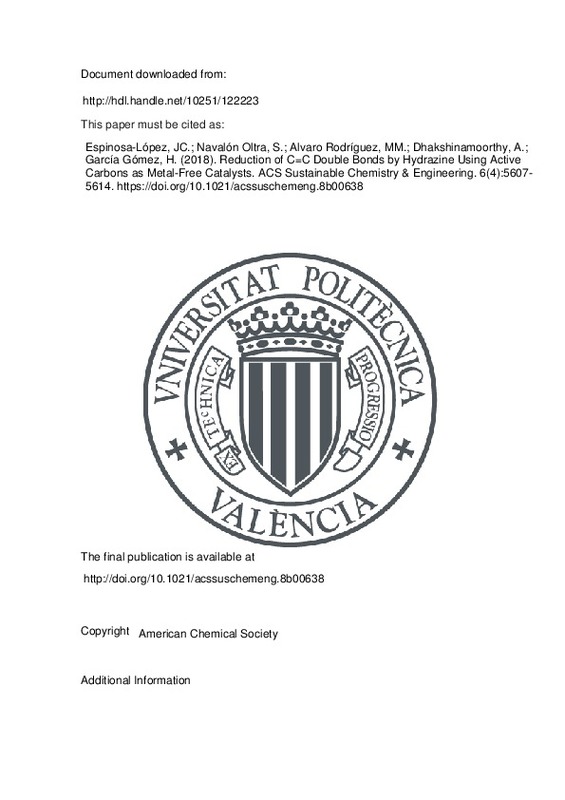JavaScript is disabled for your browser. Some features of this site may not work without it.
Buscar en RiuNet
Listar
Mi cuenta
Estadísticas
Ayuda RiuNet
Admin. UPV
Reduction of C=C Double Bonds by Hydrazine Using Active Carbons as Metal-Free Catalysts
Mostrar el registro completo del ítem
Espinosa-López, JC.; Navalón Oltra, S.; Alvaro Rodríguez, MM.; Dhakshinamoorthy, A.; García Gómez, H. (2018). Reduction of C=C Double Bonds by Hydrazine Using Active Carbons as Metal-Free Catalysts. ACS Sustainable Chemistry & Engineering. 6(4):5607-5614. https://doi.org/10.1021/acssuschemeng.8b00638
Por favor, use este identificador para citar o enlazar este ítem: http://hdl.handle.net/10251/122223
Ficheros en el ítem
Metadatos del ítem
| Título: | Reduction of C=C Double Bonds by Hydrazine Using Active Carbons as Metal-Free Catalysts | |
| Autor: | Espinosa-López, Juan Carlos | |
| Entidad UPV: |
|
|
| Fecha difusión: |
|
|
| Resumen: |
[EN] A series of active carbons with or without chemical oxidation by nitric acid have been prepared, and their activity was evaluated as metal-free catalysts for the C=C double bond hydrogenation using hydrazine as reducing ...[+]
|
|
| Palabras clave: |
|
|
| Derechos de uso: | Reserva de todos los derechos | |
| Fuente: |
|
|
| DOI: |
|
|
| Editorial: |
|
|
| Versión del editor: | http://doi.org/10.1021/acssuschemeng.8b00638 | |
| Código del Proyecto: |
|
|
| Descripción: |
|
|
| Agradecimientos: |
S.N. is thankful for the financial support by the Fundacion Ramon Areces (XVIII Concurso Nacional para la Adjudicacion de Ayudas a la Investigacion en Ciencias de la Vida y de la Materia, 2016). A.D. thanks the University ...[+]
|
|
| Tipo: |
|







![[Cerrado]](/themes/UPV/images/candado.png)


